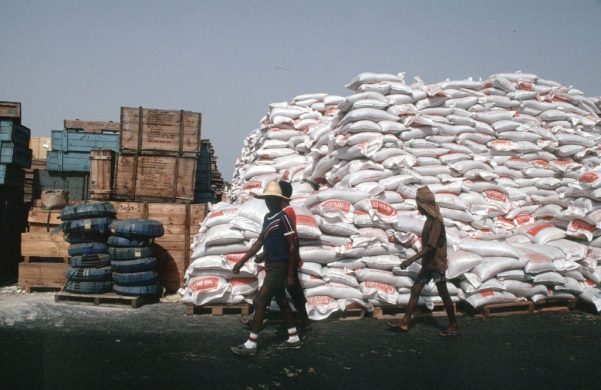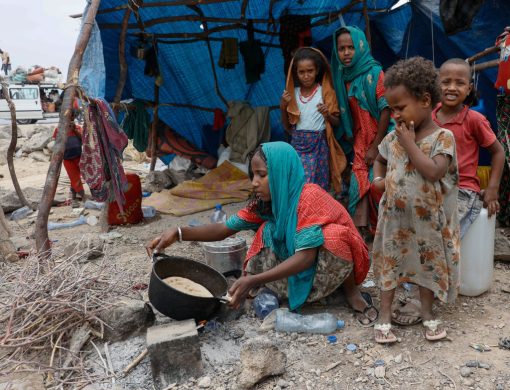ROME, 15 January 2016 (FAO): The strongest El Niño weather episode in the last several decades has caused repeated crop failure, decimated livestock herds and driven some 10.2 million people across Ethiopia into food insecurity.
Therefore FAO Friday presented its emergency response plan to urgently protect livestock and rebuild crop production in the Horn of Africa nation.
"The outlook for 2016 is very grim," says Amadou Allahoury, FAO Representative for Ethiopia, adding:
"After two consecutive seasons of failed crops, the success of the main cropping season that starts now will be critical to preventing conditions from worsening."
"Continued drought throughout the beginning of 2016 also means pasture will become even more scarce, which will negatively impact livestock keepers that rely on those grazing lands and water points for their food security." he says.
"Food overall will become harder to access if we continue to see prices rise, food stocks deplete and livestock become weaker, less productive, and perish."
The dangerous El Niño
The El Niño phenomenon is associated with the abnormal warming of sea surface temperature in parts of the Pacific Ocean that has severe effects on global weather and climate patterns – leading to reduced rainfall and drought in some regions and heavy rains and flooding in others.
Under the current El Niño, crop production in Ethiopia has dropped by 50 to 90 percent in some regions and failed completely in the east. The drought resulted in the loss of hundreds of thousands of livestock.
According to the latest assessments, access to pasture and water will continue to deteriorate until the start of the next rainy season in March.
As a result, experts anticipate that livestock will become leaner, sicker and produce less milk and many more will die.
Crop reserves are severely depleted (næsten udtømt), leaving farmers vulnerable without means of production for the upcoming planting season that starts in January.
In many cases, farmers lost valuable seeds through recurrent crop failures, planting time and time again in the hopes of rains that never came.
As a result, malnutrition rates have soared and the number of admissions for severe acute malnutrition among children is now the highest ever reported.
Response plan
The new FAO response plan aims to assist 1.8 million farmers and livestock keepers in 2016 to reduce food gaps and restore agricultural production and incomes.
The first critical phase of the 50 million dollar (ca. 340 mio. DKR) plan will focus on the meher season between January and June.
FAO plans to help 131,500 households plant with a focus on the meher season.
This intervention will include a mix of emergency seed distribution, small-scale irrigation projects, and backyard gardening initiatives targeted at empowering women's groups with tools, knowledge and access to micro loans.
As the current drought has not only affected smallholder farmers but also seed producers, it has aggravated already existing seed shortages across the country and made it even harder for farmers to plant.
Restocking of 100,000 goats and sheep
For this reason, FAO is also supporting 10,000 seed producers to produce high-quality seeds and get the local market for seeds back on its feet.
Another 293,000 households will benefit from livestock interventions, such as the distribution of emergency animal feed, vaccination drives to protect some three million animals against disease, and restocking of 100,000 goats and sheep to vulnerable households.
As many animals have been severely weakened by lack of food and water, FAO will implement a cash-for-livestock exchange that will reimburse farmers for bringing unproductive livestock to slaughter and support community feed production.
A third leg of the response plan will focus on strengthening livelihoods of more than 30 000 households and build their resilience to future shocks.
This will include cash-for-work programs that will boost families' incomes and improve critical local infrastructure and water access for livestock.
This part of the plan will also target farmers' and women's groups through integrated community projects that support community savings-and-loan schemes, farmer field schools and other methods to help families accumulate and diversify assets.
Rebuilding now
Læs videre på
http://www.fao.org/news/story/en/item/379999/icode














